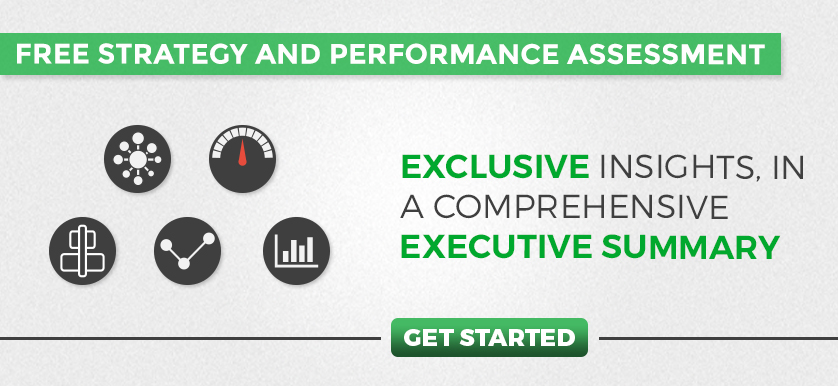How to Use Data Mapping for Improved Reporting

No matter the size or type of your business, reports probably get created for it regularly. Whether you’re a public agency or a private organization, data clarity & accuracy are two must-haves nowadays.
Going the extra mile, to create efficient and pinpoint precise reports allows you to give crucial information to stakeholders, and it makes it easier to notice trends that could cause the company to falter if not remedied. This can be achieved through a process known as data mapping.
Data mapping has a few definitions that vary slightly. The most common way to describe it is as a process that shows the relationship between data in two repositories, such as a source file and a data warehouse.
Some people also describe data mapping more broadly, as the act of creating a comprehensive system that tracks the contents of all the databases a company has.
Moreover, a newer approach called “data-driven mapping” aims to show all the links between two data sets. That approach enables companies to identify trends and see commonalities in the information they may otherwise miss.
Now, with those definitions out of the way, let’s get into six data mapping strategies that can help you enjoy enhanced business reporting.
1. Choose a Data Mapping Interface That Supports Your Reporting Needs
One of the earliest steps you should take in your data mapping process is to figure out which tools on the market have the required features and capabilities to facilitate creating the kind of reports your company creates now. Think of the business’s likely future needs, too.
Consider making a list of all the features your company wants most in the data mapping tool it uses. Then, assess what’s available and try to choose one that provides all or most of the desired characteristics. Evaluating the level of tech-savviness the product’s users generally need is a good idea too.
For example, if the primary individuals using it do not have database architecture backgrounds, it may be most appropriate to choose a drag-and-drop interface.

2. Understand How Data Mapping Connects to Privacy Regulations
When the General Data Protection Regulation (GDPR) came into effect in May 2018, it forever changed how businesses that engage with customers in the European Union collect and use data. You may have already noticed how the GDPR affected the way you create reports or limited the amount or type of information you have about customers.
For example, one of the key components of the GDPR is a customer’s “right to be forgotten.” It is not an absolute privilege that consumers have, but in certain circumstances, they can ask companies to delete data related to them.
Deciding that you’ll use data mapping for better reporting could also show external auditors that you take GDPR seriously. For example, a data map can inform a regulatory official of the links between any data you have and third parties who can access it. Similarly, data maps reveal how a company processes its data, helping regulators confirm business compliance.
Even if the GDPR does not apply to you, other privacy-centric laws are in the works elsewhere. Plus, people are increasingly worried that they can’t trust businesses with their data. A 2018 study by Gemalto shows justification for those fears. The statistics showed that only a small majority (54%) of companies knew where they kept sensitive data.
Additionally, 68% of the IT professionals who responded to the poll said they believe their organizations are not carrying out all the requirements to stay in line with data protection laws.
This lack of knowledge about data also makes accurate reporting more difficult, mainly since the methods may not encompass all the available information. A surprising 65% of companies said they didn’t have the resources to analyze all their stored data.
3. Make Sure Your Data Map Contains Enough Information
If you’re making a data map that reveals the location of all the information in the company’s possession, don’t take shortcuts. If you fail to include pertinent information on the data map, making reports and otherwise using the data will likely prove exceptionally difficult. Most data maps contain the following information:
- Data source (Company email system, mobile phone, workstation hard drive, etc.)
- Storage location (Third-party cloud provider, physical company server, etc.)
- Type of data (Word documents, PDFs, images, videos, spreadsheets, etc.)
- Volume of the data
- Data status (Active, archived, offline, legacy, or backup are the standard categories used)
- Data access specifics (Which parties can access the data, how they do it and how long it takes)
- Who owns the data
- The data’s value to the business (May depend on several factors, including how the company uses the data, the kind of details it contains, how frequently the enterprise uses the information, etc.)
- Confidentiality level (Public, confidential, or trade secret)
- Whether the data contains material not owned by the company
Ensuring that your data map indicates all the information it should also relates to another data-related subject: Visualization. Businesses often depend on data visualization for improved decision-making.
One of its primary benefits is that it presents ideas in ways all interested parties can understand. Some of the reports you make with help from data mapping may even directly relate to visualizations your company’s leaders will study to make crucial choices.
The best data visualizations allow viewers to see the essential information immediately and without confusion. A data map containing the information suggested above does that too. Then, if you need to pull certain information to make a report, data mapping gives you a starting point and prevents fruitless searching.

4. Be Mindful of Data Retention Policies
Some types of data, such as health care information, have associated rules that state how long the holder must retain the data. If you keep any information that has timing specifics, the data mapping approach should incorporate the respective minimum periods. It’s easy to imagine how much time you might waste looking for data due to not being aware that it got properly deleted according to your company or industry standards a few months ago.
Additionally, data retention details support faster reporting by avoiding the possibility of sifting through far too much unnecessarily retained data to find what you need. To return to GDPR again, Senzing released a global 2018 study that polled respondents about their GDPR readiness and other matters. GDPR-related information searching was one of the topics covered.
It found that the average company anticipated getting 86 GDPR information requests per month and that they would need to go through 23 different databases to locate the information. The research also estimated that, under that setup, company employees would spend 173 hours per month sourcing information alone.
Provided you still have the information that a party wants, a carefully made data map could help locate the information more quickly. That’s helpful when meeting GDPR requests and when pulling data for reports. Of course, instances may exist where you have the same data stored in more than one place. But, even if so, having a data map lets you know where to look, and could confirm that your business still has the data to provide.
5. Reassess Your Data Maps Frequently to Check for Accuracy
Even the most painstakingly created data maps become useless if they’re out-of-date. Numerous things can make your once-current data maps obsolete before anyone realizes it.
For example, consider the effects that a company merger or acquisition could cause. Suddenly, the enterprise has information associated with another business that wasn’t under its corporate umbrella before the change happened.
Or, if your business starts using a new cloud provider, that decision could mean your data maps are no longer correct because they indicate the old provider still has company information. These kinds of issues could bring about reporting nightmares because they mean that data maps no longer serve their purpose.
The ideal way to steer clear of problems connected to outdated data maps is to scrutinize them often to ensure they still contain the right information. Also, always determine whether any decision a company makes could interfere with the information shown by a data map.
6. Consider Using Artificial Intelligence to Streamline Data Mapping
As the amount of data your company has increases, it could become more difficult to make a usable data map or even settle upon a consistent structure to organize your company’s data. Then, you could run into problems with unstructured data, which is any information that doesn’t follow predefined organizational rules or a data model.
A 2018 study from Igneous found that 59% of companies have at least 10 billion unstructured data files and see an average annual growth rate of 23% for that information. If your company relates to those statistics, using AI to help with data mapping could be a valid solution. It could make the process more efficient and remove some sources of human error, which in turn creates more accurate reports.
Final thoughts
It should now be obvious why data mapping supports better reporting processes and results. Without a proper data mapping roadmap, most companies simply dawdle in the dark, without much clarity or logic behind their reporting processes.
Given today’s business’ size and scope, it would be considered highly unwise and quite foolish even to attempt a data analysis process, without the right reports or operations in place. The steps above can help you create such a roadmap for your company, and do so confidently.
Image sources:

Tags: Data analysis, Data design, Process Mapping, Reporting Performance





